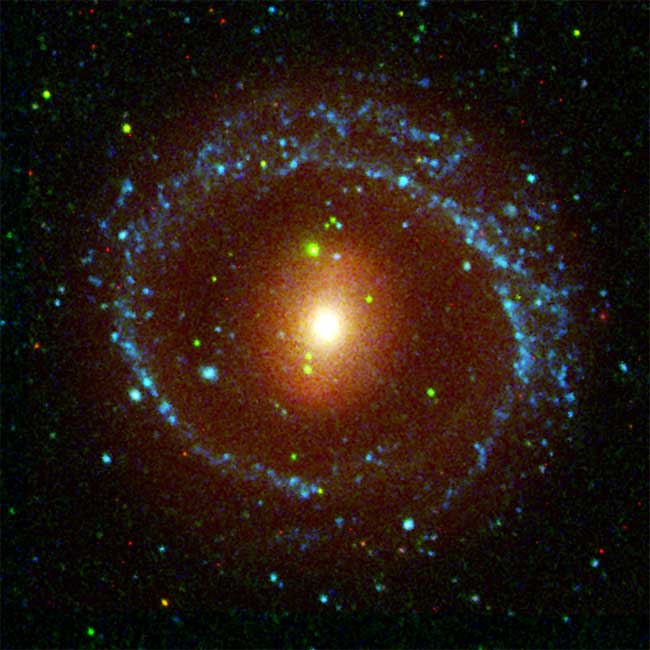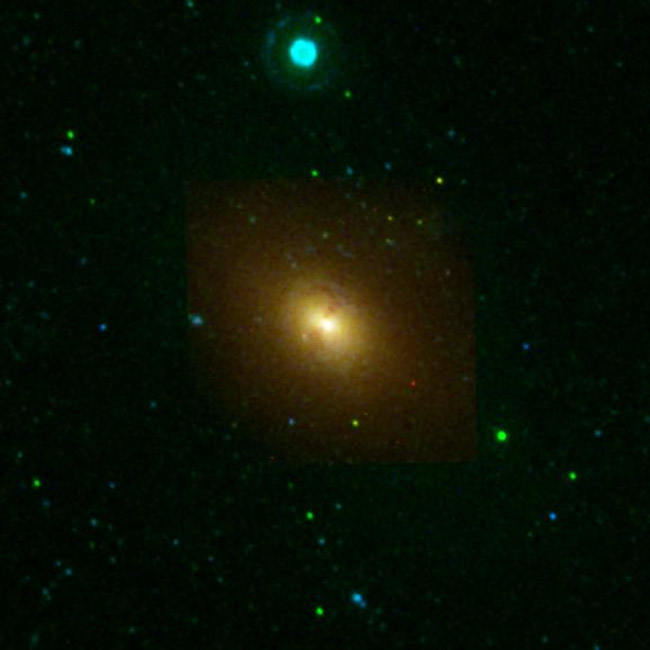The discovery of "teenage" galaxies is giving scientists a better handle on how galaxies transform from sexy, spiral star factories to shapeless retirement homes for old stars.
In the early 1900s Edwin Hubble discovered that the Milky Way galaxy is not alone. Our galaxy is just one of many "island universes," as Hubble dubbed them, swimming in the vast sea of space.
Now that astronomers can measure the age of each galaxy, its star-making activity and other related data, they are piecing together an understanding that galaxies grow gradually like children, gliding through their visibly different teen years before reaching adulthood.
Results being published in a December issue of the Astrophysical Journal provide the strongest evidence yet for this thinking, called nurture theory, in which the elegant spirals (young galaxies) and blob-like ellipticals (old galaxies) are evolutionarily linked.
Color-coded
Scientists have long thought that young galaxies grow up into old ones, referred to as blue and red galaxies, respectively. The color indicates how actively the galaxy is churning out new stars. Younger stars shine in ultraviolet or blue light, and so galaxies bustling with star-making activity appear blue. Older stars emit infrared or red light. In aging galaxies, their "stellar reproductive" capacity has begun to shut down and so the remaining stars are just hanging out for the remainder of their lives.
About half of all galaxies are blue and half are red. It had been postulated that the two are linked, with the blue young'uns running out of star-making material and maturing into passive red galaxies.
If this theory holds true, you'd expect to see a population of "teenage" galaxies in the process of transitioning from young to old. Finding these teens is tricky though, because the cosmic change occurs over billions of years.
"The nurture theory of galaxy evolution predicted that there would be galaxies in transition," said lead author Christopher Martin, principal investigator for NASA's Galaxy Evolution Explorer (GALEX) mission at Caltech in Pasadena, Calif. "Finding these galaxies required ultraviolet light, because they really stand out at this wavelength."
Cosmic history
Data from GALEX, launched in 2003, allowed Martin and his colleagues to observe galaxies in ultraviolet light across 10 billion years of cosmic history. The researchers' analysis of tens of thousands of images taken by GALEX has revealed that young, spiral galaxies do in fact first mature into "teens" before winding down into their elderly ellipses.
The details of the picture now emerging suggest that a spiral galaxy might merge with another spiral or perhaps an irregularly shaped galaxy before churning out a few bursts of newly minted stars. Eventually, the galaxy begins to exhaust its star production and settles into later life as an elliptical.
"Our data confirm that all galaxies begin life forming stars," Martin said. "Then through a combination of mergers, fuel exhaustion and perhaps suppression by black holes, the galaxies eventually stop producing stars."
The findings also suggest that some young galaxies waltz into old age quickly, while others leisurely stroll into their golden years.












